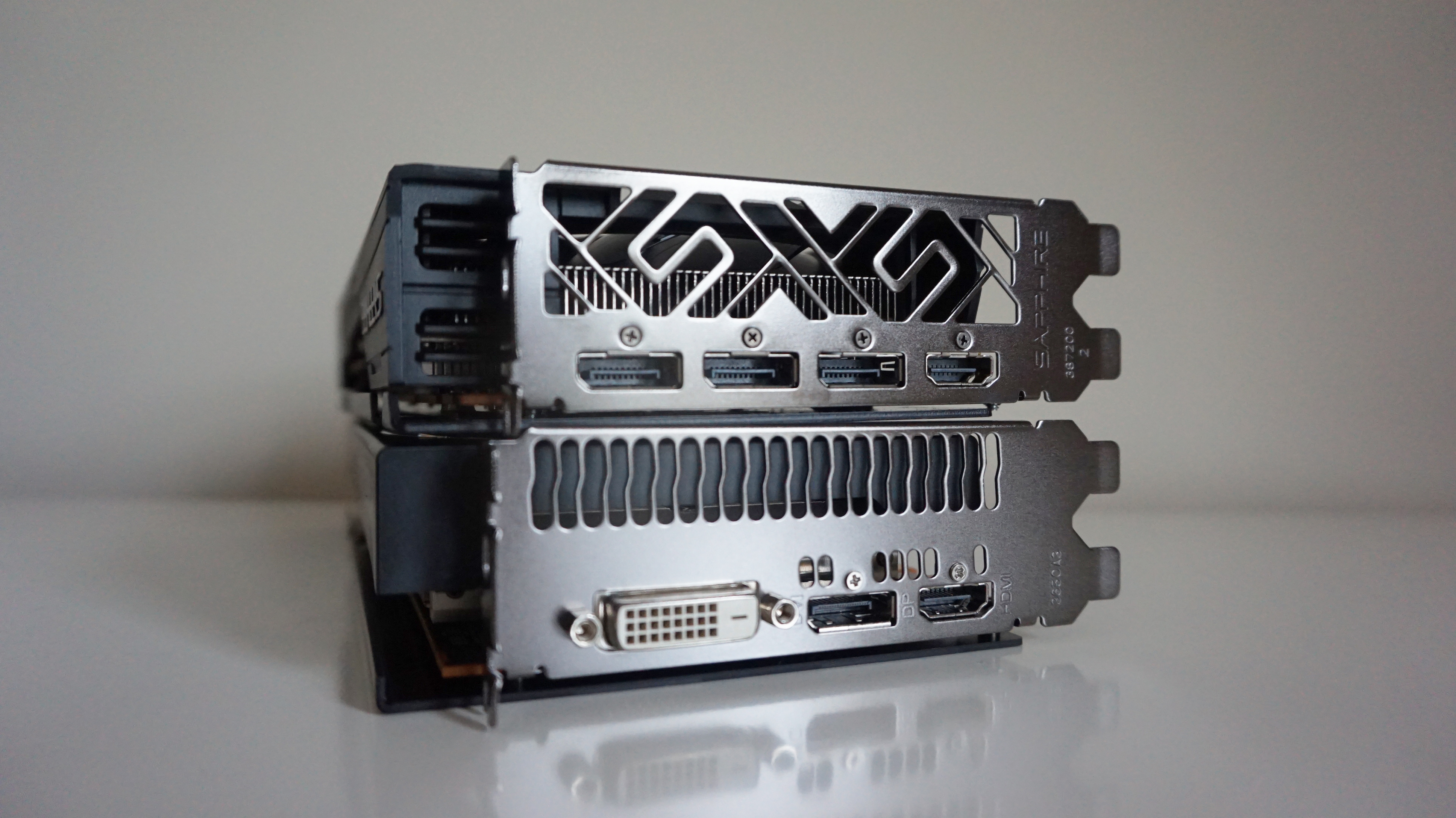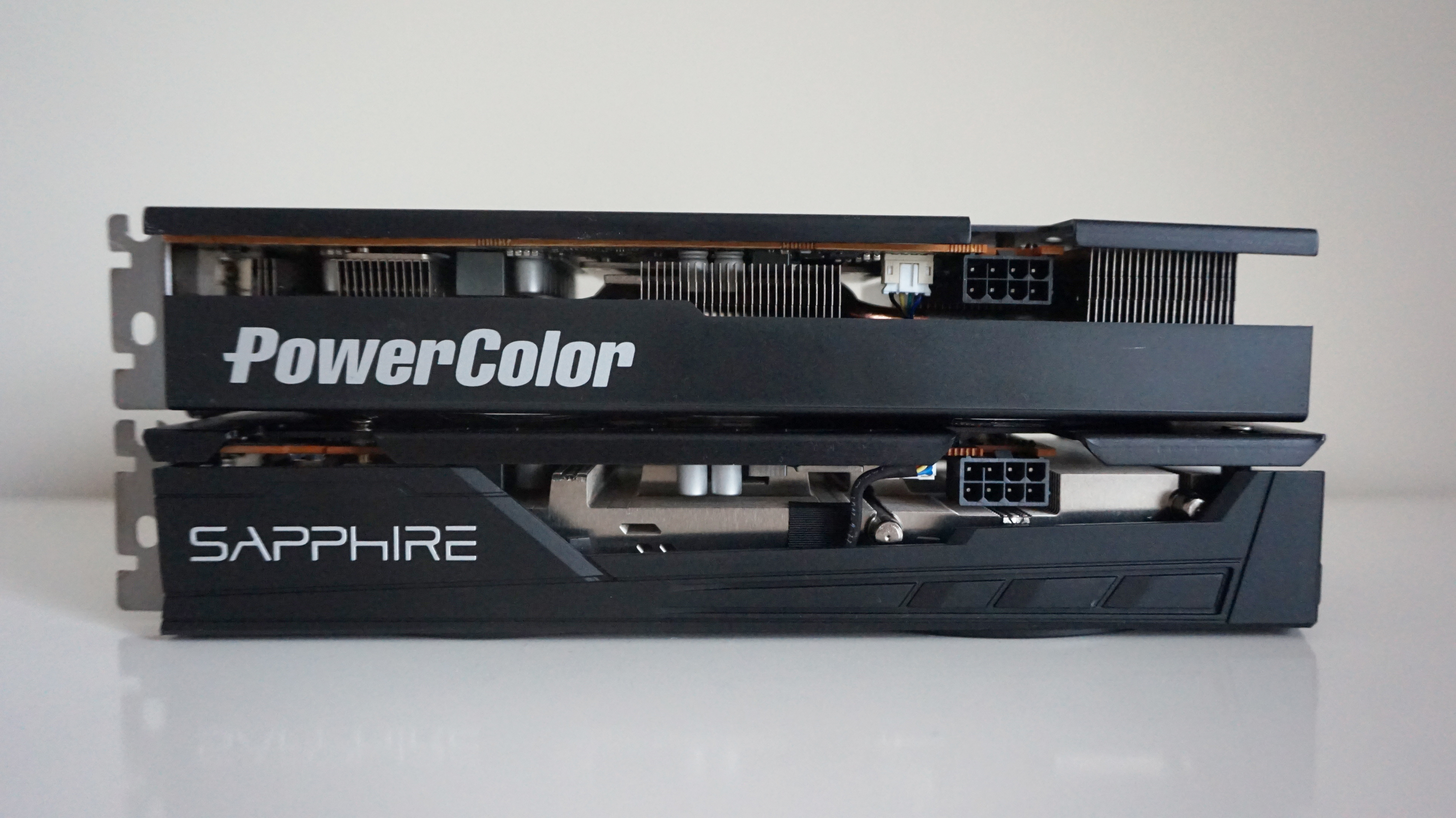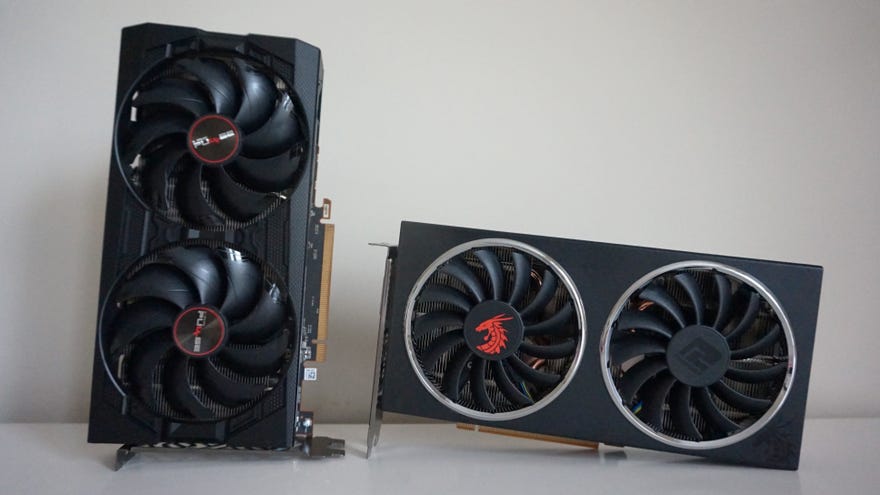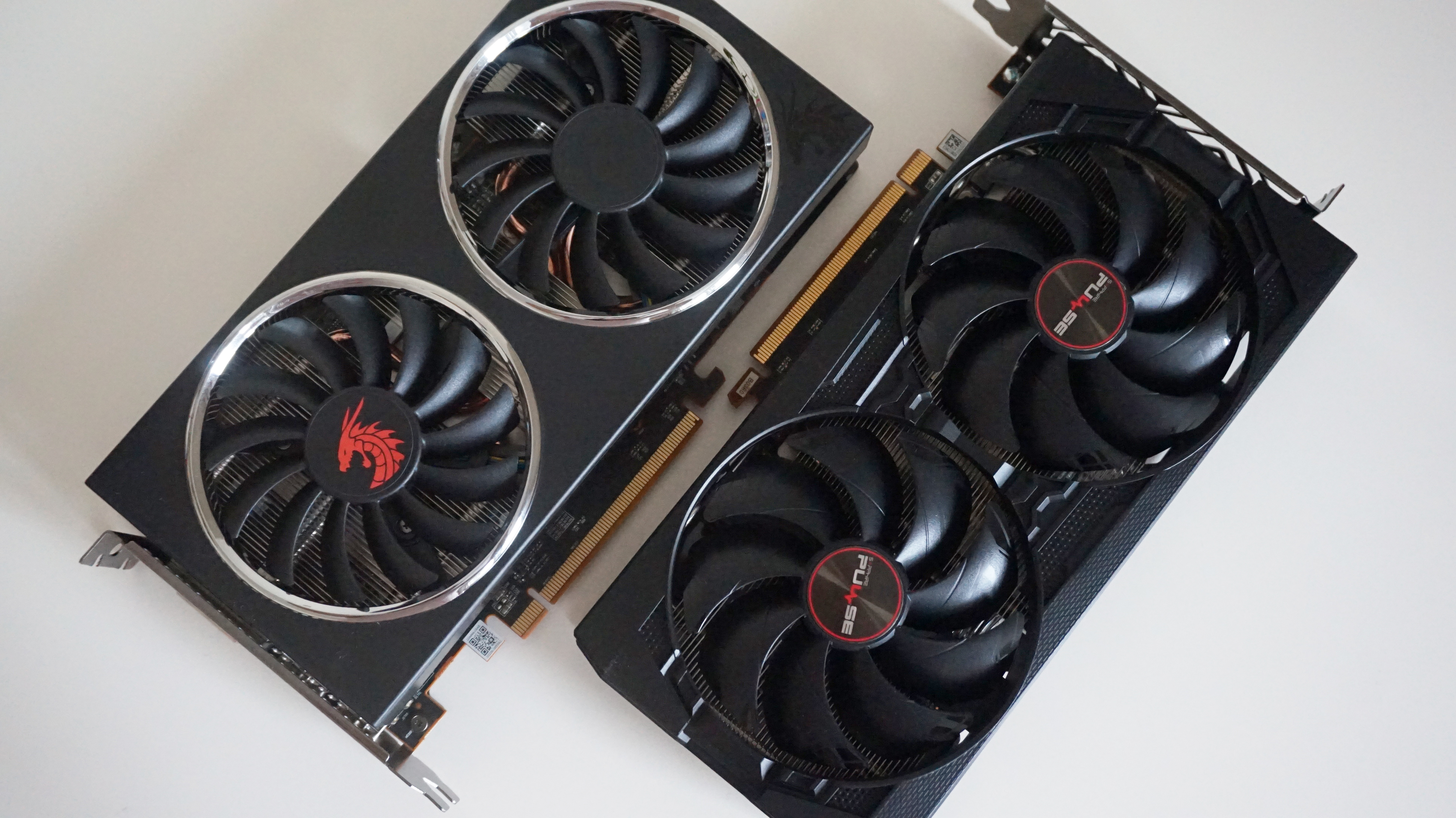AMD Radeon RX 5500 XT review: More Super than all of Nvidia's budget cards combined
The new benchmark for 1080p gaming on a budget
When AMD first announced their new budget Big Navi card, the Radeon RX 5500, back at the beginning of October, I was expecting review samples to follow swiftly after it. They did not. Turns out, the RX 5500 isn't actually a graphics card you can buy off the shelf. Instead, the only place you'll find them is inside a pre-built PC. Why? Who knows. Perhaps it's so you can feel a teensy bit better about opting for their hot off the press Radeon RX 5500 XT instead, which you can go and buy right now in both 4GB and 8GB GDDR6 memory variants for £160 / $170 and £180 / $200.
Take a closer look at the RX 5500 XT's specs, however, and you might be wondering where the XT bit comes in. After all, if AMD's higher-end RX 5700 and RX 5700 XT are anything to go by, the "XT" is effectively AMD's answer to Nvidia's "Super" name, signifying a superior version of its non-XT sibling. Yet, the RX 5500 and RX 5500 XT not only share the same number of compute units (22) and the same number of stream processors (1408), but they also have the same 'game' clock of 1717MHz, as well as an identical max clock speed of 1845MHz, too (game clock being AMD's new term for the typical clock speed you'll see when playing games). It's all sounds a bit fishy if you ask me, but truth be told, it's not really that important. What matters is that this card kicks Nvidia's GTX 1650 in the middle of next week and is pretty much neck and neck with their similarly priced GTX 1660 cards. Here's wot I think.
Now, I know there's an elephant in the room here. "What about the GTX 1650 Super?" I hear you cry. Alas, I still haven't been able to get my hands on one of these because Nvidia won't send me one themselves and third party cards seem to be in very short supply. I'm still hoping to get one before Christmas, but to be honest, I'd be surprised if it made a dent on the RX 5500 XT, because AMD's new 1080p-oriented GPU is so far in front of the regular GTX 1650 rival that the Super would have to pull off a serious last-minute upset to make it even worth considering at this price. Yes, both the GTX 1650 and GTX 1650 Super can be had for around a tenner less right now at £150 / $160, but the 4GB version of the RX 5500XT has some seriously beefy innards for a budget-facing graphics card, replacing the 8GB RX 580 as my new graphics cards recommendation for 'what you should actually buy' for smooth, 1080p gaming.
I was sent both a 4GB and 8GB variant of the RX 5500 XT. On the 4GB side, we have Sapphire's Radeon RX 5500 XT Pulse (pictured above, right), and Powercolor's Radeon RX 5700 XT Red Dragon (above, left)for the 8GB crowd, which are both at the cheapest end of their respective categories. For the most part, their performance was pretty much identical, making both cards equally good choices for anyone after 60fps gaming at 1920x1080 on Medium to High graphics settings.
The main reason why you might want to consider the 8GB version is when you want to push into a game's top quality settings, or step up to a bit of 1440p (which the RX 5500 XT is perfectly capable of doing, by the way, just not at particularly high quality settings). Monster Hunter: World and Assassin's Creed Odyssey's max quality settings, for example, require more than 4GB of memory at 1080p, and memory requirements are only going to get larger as you move up to larger resolutions.
This was reflected in my benchmark results, where the 8GB RX 5500 XT routinely outmanoeuvred its 4GB sibling when playing at 1080p on Ultra and Very High and the like, as well as a couple of cases at 1440p. As a result, the 8GB will naturally offer more future-proofing for prospective PC builders, but if you're fine sticking with Medium or High settings and don't tend play a lot of 'big' games anyway, then the budget conscious among you will almost certainly be fine with the 4GB card.

Case in point, the 4GB RX 5500 XT still put in a very admirable performance in both Monster Hunter: World and Assassin's Creed Odyssey at 1080p, averaging around 65fps on High in both. It also managed a very playable average of 53fps in Final Fantasy XV on High as I ran up and down the lush hills of Duscae (with all Nvidia's extra effects turned off, natch), as well as 53.5fps on High in Total War: Three Kingdoms - which really isn't that bad for a £160 / $170 GPU.
I was impressed with its performance in Shadow of the Tomb Raider, too, where it averaged 55fps on Highest, albeit with its SMAA anti-aliasing enabled rather than its tough SMAA x4. I had to drop the quality down to Medium on Metro Exodus to get a smooth 63fps average in its built-in benchmark (High was a bit too much at 45fps), but it was back up in Ultra territory for both Forza Horizon 4, where it averaged 72fps at 1080p, and The Witcher III, averaging 59fps on its default Ultra preset, and 68fps when I switched off all the Nvidia Hairworks stuff.
The 8GB version, meanwhile, put in a very similar performance, and was often too close to really call it an appreciable difference. Indeed, the only games where it really improved on its 4GB sibling were Shadow of the Tomb Raider, where it pushed its average frame rate up to 64fps on Highest with SMAA at 1080p, and Monster Hunter: World, where its High average rose to an even silkier 69fps - although it's not like you'd see the difference unless you had a high refresh rate monitor at your disposal. Everything else was pretty much the same.
Yes, the 8GB version made a much better fist of Final Fantasy XV and Assassin's Creed Odyssey on their max graphics settings, but unless you're happy trundling around the mid-40fps mark, those after a smooth 60fps will be playing on exactly the same settings on either card.

The same goes for playing on Medium settings at 1440p, too. In pretty much every game in my testing suite, both the 4GB and 8GB RX 5500 XT came in with identical results, offering speeds of either 60fps, or as close as they were ever going to get it, with most games falling in the 45-50fps zone at this resolution. The 8GB version took the lead when I bumped the settings up to High, but then you run into exactly the same problem as I've just described. If you're after the smoothest experience at this resolution, the 4GB version will serve you just as well as the 8GB version.
Sure, an extra £20 / $30 isn't much in the grand scheme of things, but why pay more when you're getting more or less exactly the same experience on both cards? It becomes especially important when we start comparing the RX 5500 XT to Nvidia's crop of budget cards, too. At £160 / $170, the 4GB RX 5500 XT is in direct competition to the £150 / $160 GTX 1650 and GTX 1650 Super and is just a bit cheaper than the £180 / $210 GTX 1660 (not to mention quite a lot cheaper than the £215 / $240 GTX 1660 Super).
Well, as I mentioned above, we can immediately disregard the regular GTX 1650 as this is a card that can barely hit 60fps on Medium at 1080p in a lot of games, making the RX 5500 XT an infinitely better buy straight away. The GTX 1650 Super may yet prove to be a dark horse in this regard, but unless it's suddenly much faster than the normal GTX 1660, I doubt it's going to have much sway.
The GTX 1660, for example, goes toe to toe with the RX 5500 XT, offering mildly better performance in Total War: Three Kingdoms (63fps on High vs AMD's 53fps) and Final Fantasy XV (64fps on High as opposed to 54fps) at 1080p, but coming in with identical speeds everywhere else. The same goes for its 1440p performance, too.
The GTX 1660 Super breaks a little bit further away, but then you're also paying substantially more for it - another £55 / $70, in fact. Even so, I'm not sure it's actually worth it. Sure, you'll get a bit more leeway to push up to High territory a bit more often (and the Very Highs in a couple of cases) and still get a great experience, but even this still can't hit a smooth 60fps on a lot of max settings. Assassin's Creed Odyssey tops out at an average of 49fps on Ultra High, for example, Metro Exodus chugs along at 42fps on Ultra, Monster Hunter: World averages 53fps on Highest, while Ultra-fied Total War: Three Kingdoms peaks at an average of 48fps.

As a result, you're probably going to be spending more of your time on High again in a lot of cases, which the 4GB RX 5500 XT can already do quite comfortably for a lot less outlay. The RX 5500 XT even beats (or comes within a frame's spitting distance of) AMD's own RX 590 in a lot of cases, too, which is also pretty damn impressive considering that card came out just over a year ago for a whopping £250 / $279.
Overall, then, the RX 5500 XT is a fantastic 1080p graphics card, regardless of whether you're on a budget or not. There's little reason to upgrade if you're an existing GTX 1060 or RX 580 / RX 590 owner, but if you're still rocking one of Nvidia's GTX 1050 Ti GPUs or an older AMD Radeon RX card and are starting to feel the strain a bit, then the RX 5500 XT is the perfect replacement. Plus, it comes with a free copy of Monster Hunter: World's upcoming Iceborne Master edition (although you'll have to wait until Iceborne comes out to play that part of the game) and three months of Xbox Game Pass, making it even better value for money. That's an incredibly generous package for £160 / $170, making it an absolute no-brainer for 1080p bargain hunters.











